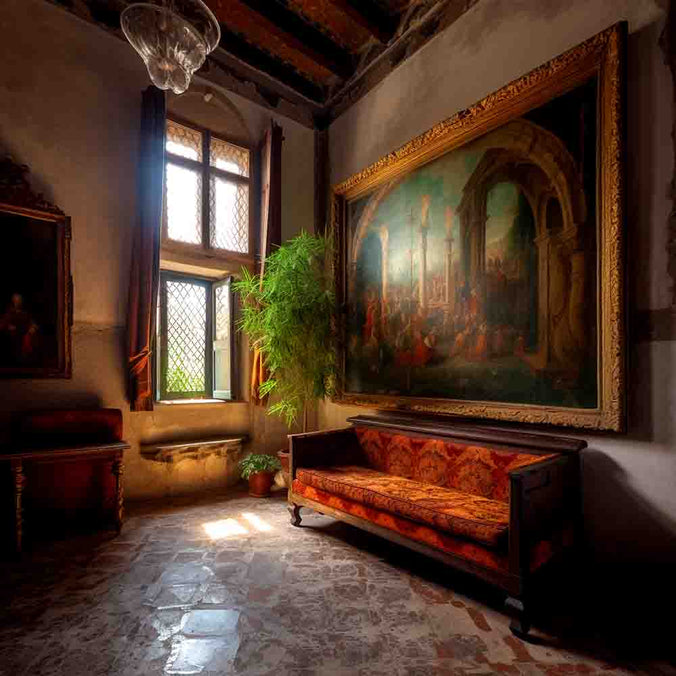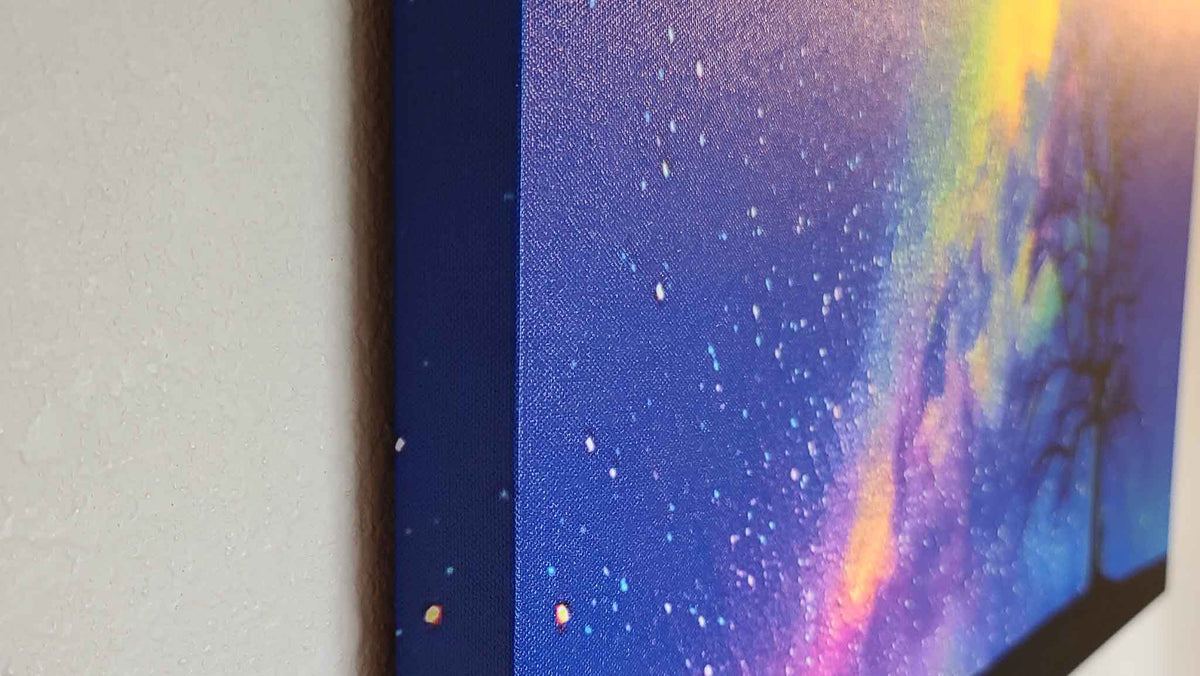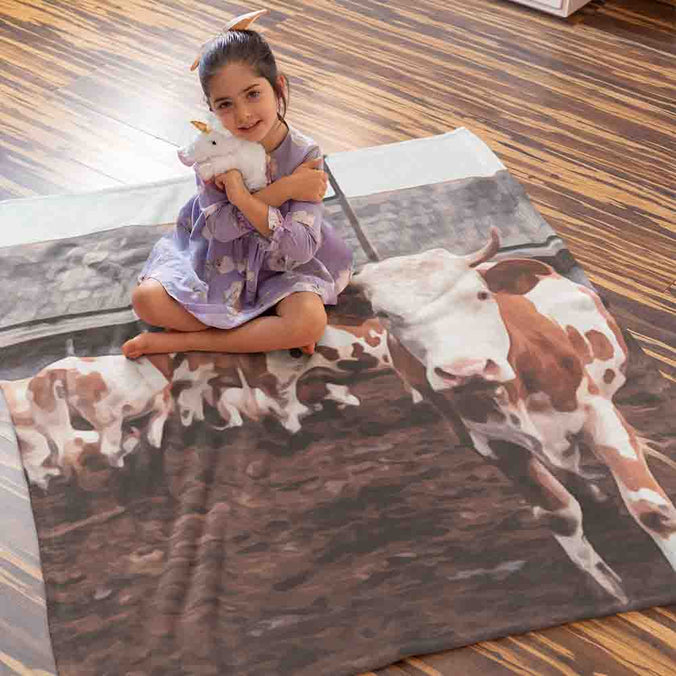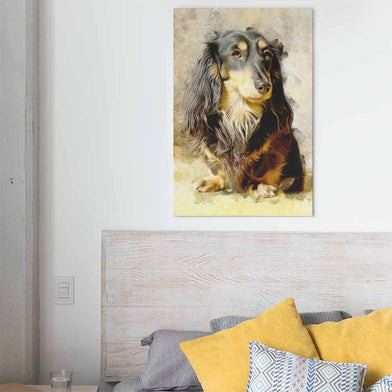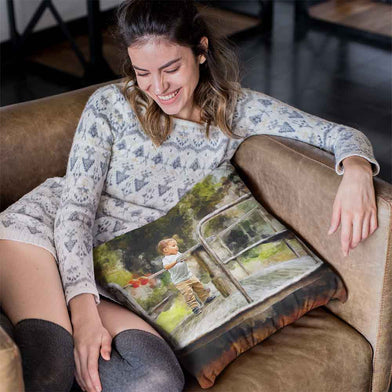What is Pop Art?
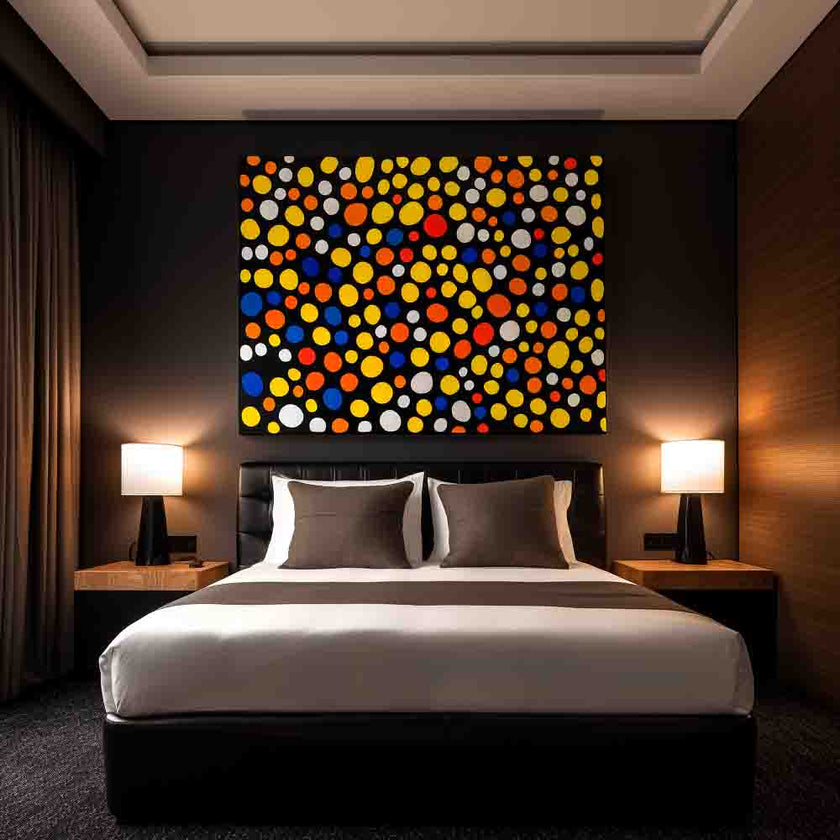
What is Pop Art?
Pop Art is a bold and influential art movement that originated in the 1950s and 1960s, drawing inspiration from popular culture, advertising, and mass media. Characterized by vibrant colors, bold imagery, and references to popular culture, Pop Art challenged traditional art ideas and made art more accessible. Key artists of the movement include Andy Warhol, Roy Lichtenstein, Claes Oldenburg, and Yayoi Kusama. Modern Pop Art continues to explore themes like consumerism, technology, and social issues. Incorporating Pop Art into home décor adds a vibrant, modern atmosphere and showcases the lasting impact of this iconic movement.
Characteristics of Pop Art
Pop Art is characterized by vibrant colors, bold imagery, and the use of popular culture and mass media elements. The artists often infused their works with satire, irony, or humor to make statements about current events or challenge the status quo.
- Colorful and bold: Pop Art pieces often feature bright colors and striking imagery, which immediately grab the viewer's attention.
- Popular culture references: Pop Art artists frequently use images and icons from advertising, comic books, movies, and music in their work.
- Satire and irony: By incorporating humor and irony, Pop Art artists questioned societal norms and made commentary on consumerism and other contemporary issues.
Origins of Pop Art

Pop Art emerged in the mid-1950s in New York and London, as a response to the dominant approaches to art at the time, such as Abstract Expressionism. The Independent Group, a collective of young artists in London, is often credited with initiating the Pop Art movement.
Famous Pop Art Artists
Some of the most famous Pop Art artists include:
- Andy Warhol: Known for his iconic works featuring celebrities and consumer goods, Warhol was a leading figure in the Pop Art movement.
- Roy Lichtenstein: Lichtenstein's works, which often parodied comic strips, are instantly recognizable due to their use of primary colors and Ben-Day dots.
- Claes Oldenburg: Oldenburg created sculptures inspired by everyday objects, often made from unconventional materials.
- Yayoi Kusama: Kusama's works, which incorporate polka dots and repetitive patterns, span a variety of media, including painting and installation art.
How to Create Your Own Pop Art
To create your own Pop Art, follow these steps:
- Choose a photo: Select a portrait or an image from popular culture as your starting point.
- Use a photo editor: Use a photo editor with layer support to manipulate the image, adding bright colors and bold patterns.
- Experiment with techniques: Incorporate Pop Art techniques such as repetition, overlays, and dots to create a unique style.
- Print or save: Print your creation on paper or transfer paper, or save it as a digital file for use in other projects.
Types of Pop Art

There are many types of Pop Art, each with its own unique style and techniques.
Some common features include:
- Use of commercial methods: Many Pop Art pieces were created using commercial techniques, such as screen printing and lithography.
- Handmade elements: Other Pop Art works are entirely handmade, featuring detailed illustrations or collages.
- Use of diverse materials: Some Pop Art artists, like Marisol, used a wide range of materials to create their sculptures.
Modern Pop Art
Pop Art continues to be relevant in contemporary society, with modern artists incorporating elements of the style into their work. Modern Pop Art often uses current popular culture references and explores themes such as consumerism, technology, and social issues.
Incorporating Pop Art into Your Home Décor
Adding Pop Art to your home décor can create a vibrant, modern atmosphere.
Here are some tips for incorporating Pop Art into your space:
- Paint a Pop Art mural: Create a striking focal point by painting a Pop Art-inspired mural directly onto a wall.
- Choose iconic pieces: Select artwork by famous Pop Art artists to add a touch of authenticity and historical context to your space. Reproductions of well-known works by Andy Warhol, Roy Lichtenstein, or Yayoi Kusama can make a bold statement in any room.
- Use neutral backgrounds: To let your Pop Art pieces truly stand out, keep the rest of your décor neutral. This will allow the vibrant colors and bold patterns of the art to be the focal point of the room.
- Create a gallery wall: Showcase a collection of Pop Art prints or posters in a gallery wall arrangement. This can be an effective way to introduce a variety of styles and themes, while also creating visual interest.
- Incorporate Pop Art-inspired accessories: Add Pop Art flair to your space through accessories such as throw pillows, area rugs, or decorative objects that feature bold colors, patterns, or iconic imagery.
- Be playful with furniture: Choose furniture with unique shapes, bright colors, or graphic patterns that complement the Pop Art theme. Retro or mid-century modern pieces can work particularly well in this context.
- Mix and match styles: Don't be afraid to mix Pop Art with other styles, such as minimalism or industrial design. This can create a dynamic and visually engaging space that reflects your personal aesthetic.
The Legacy of Pop Art
Pop Art has left a lasting impact on the art world and continues to influence contemporary artists today. Its focus on popular culture, consumerism, and everyday objects not only changed the way people viewed art but also provided a platform for social commentary and satire.
Today, Pop Art remains a popular choice for collectors and enthusiasts, and its iconic imagery is still widely recognized and appreciated. The movement serves as a reminder of the power of art to challenge societal norms, provoke thought, and reflect the world we live in.
Pop Art is a vibrant and accessible art movement that has left a lasting impression on the art world. Its bold colors, striking imagery, and commentary on popular culture continue to captivate audiences and inspire new generations of artists. By incorporating Pop Art into your home décor or creating your own Pop Art-inspired pieces, you can pay tribute to this influential movement and add a modern, eye-catching touch to your living space.
Leave A Reply
Your email address will not be published. Required fields are marked *

